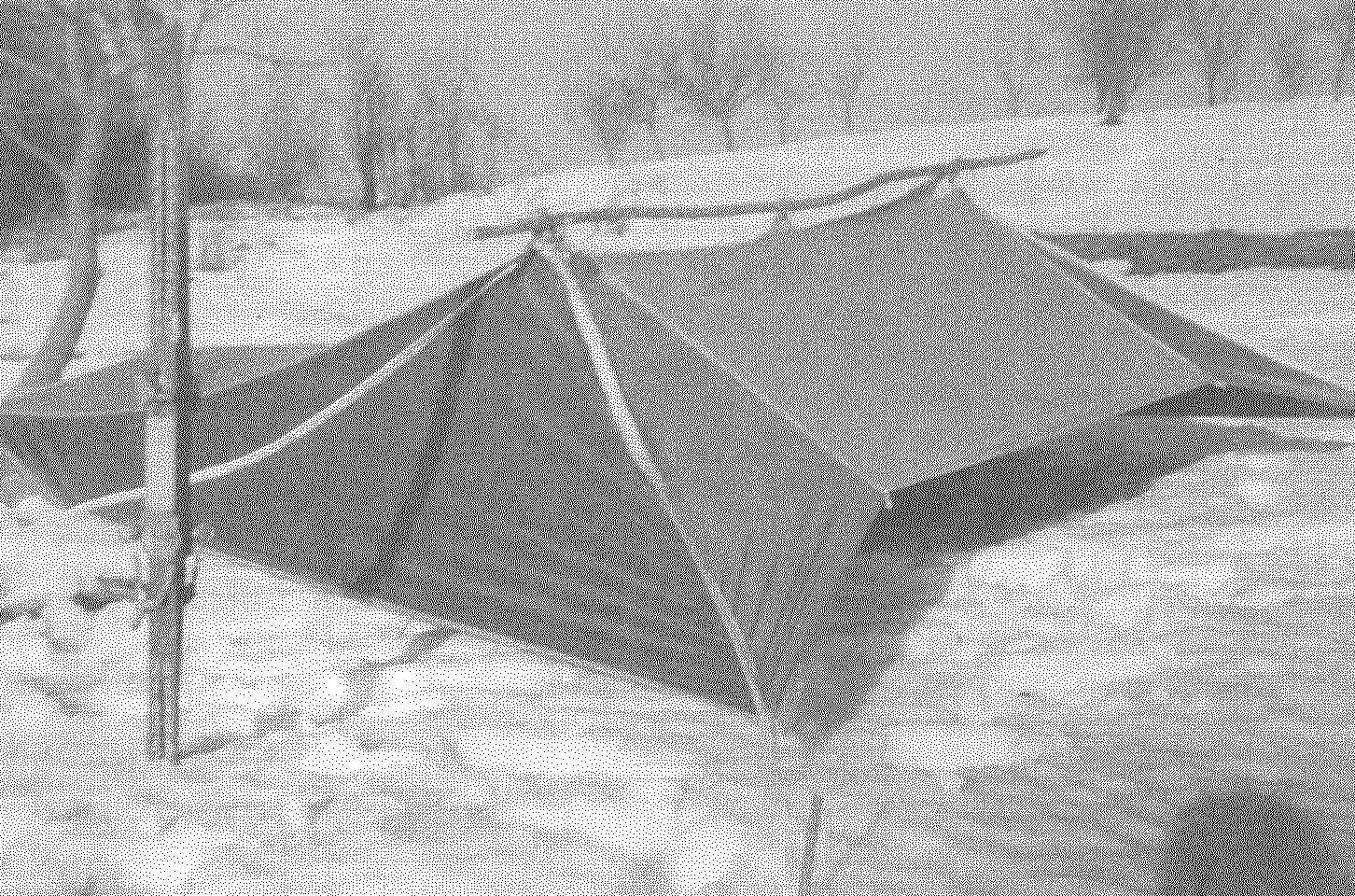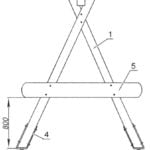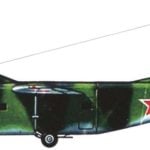 With the teenage years stuck with me a travel song that “people go around the world, they kind of need would be a sturdy tent, Yes, boring way,” And the motive winningly simple, and the words still retain their relevance. Especially about the tent because that offers today’s domestic market, a real tourist, alas, is not always suitable.
With the teenage years stuck with me a travel song that “people go around the world, they kind of need would be a sturdy tent, Yes, boring way,” And the motive winningly simple, and the words still retain their relevance. Especially about the tent because that offers today’s domestic market, a real tourist, alas, is not always suitable.
Fans of challenging trails and all-weather testing recommend themselves to make a really comfortable, reliable tent (Fig. 1) geometry which is easy to change. In the “resort” conditions, this is a triple “hotel” with a height more than two meters (only 4 kg), is able to further give shelter under its spreading roof, three more tourists Will be where to place and sleeping bags, and backpacks. Well, in a storm bad weather the tent can become climbing “squalodontidae” squat then Its height does not exceed 0.7 m.
The cost of the materials needed for sewing this tent is relatively small, the Bulk of the amount goes to the purchase of silk is: water-repellent (7,5×1,5 m) and conventional (6,65×1,5 m). Then in descending order followed by the cost of three detachable lock-“lightning” (it is possible to save when you replace the cheaper zipper type buttons or buttons), mosquito net (2,5×1,5 m), synthetic burlap (6 bags), the binding band.
To start making tents best with bottoms. The workpiece (see figure 1, item 1) serves as a “patchwork carpet”, Zapashny double stitched seam (figure 2B) from six pre-ripped bags.

Fig. 1. Homemade tent, with a variable “geometry”:
1 — the bottom (stitched from six pre-ripped synthetic woven bags), 2 — canopy (mosquito net, the size and exact configuration in place, 2 pieces), 3 —side panel (2 PCs); 4 — the bottom insert (2 piece), 5 — back wall, 6 — roof wing (2 PCs), 7 — roof, 8 — lower inflow with an annular slot; 9 — belt (sewn binding ribbon, rolled it lengthwise, 5 PCs) 10 — top zip fastener-“lightning” or Lugovoe-paleczny row), 11 — a waterproof joint (2 PCs), 12 —upper tide with a loop of polyester cord, 13 — a beam; 14 — the riser (2); 15 —thrust ring (dural cover of the bearing unit from the motor, 2); 16 — stretch rope support (polyester cord, 2 PCs.); 17 — visor, 18 — side zip (combination with lock-“lightning” and Lugovoe-petelicki next, 2 units), 19 — to the front wall; 20 — stretch, with two rings and a pin (7 set); material detail of positions 6, 7, 17 — water-repellent, and children. POS. 3,4, 5 —plain silk
A small but very important tip before you deal with threads, bobbins and needles, it is desirable to impregnate the glue “Moment” or the less common water-resistant analogs of the edges of the billets and other locations of future suture joints Time it takes is not too much, but any subsequent sewing — smooth as butter!
However, on turn is the slope of the roof. Carve out it must of waterproof silk size 2000×1500 mm. piece of Cloth of the same fabric, but the larger (3700×1500 mm) is used to make two wings and the top and bottom of the tides, additional (conditionally not shown) of stripes enhance the fixing braces On designated areas set bandages. Edges, which have to be external and exposed to high loads during operation of the tent, treated Shnurov contranym seam.
The turn — side. Their cut and sew in the “semi” out of the ordinary silk panels size 2100×1500 mm and 1050×750 mm. the Bottom sew a canopy of mosquito netting (available at the hardware store). However, the dimensions and configuration of the latest “bring to standard” only to later stages, if the complete structure in “resort”, the highest possible.
It must be borne in mind that the curtains in “kvalitetom” (squat) the use of the tent plays the role of a door so the bottom to sew both buttons and in the appropriate places on the bottoms of the loops. Connection with the front wall combo and Petelino-button, and the lock-“lightning”.
In the manufacture of the front wall are unlikely to cause difficulties even for novice homebrew. Blank — panel normal silk size 2150×1500 mm should Not only forget that it requires impregnation with adhesive edges, and then tamping a single Zapashny seam (figure 2B).
But the visor — water-repellent silk Edge, which should be the external part of a common load circuit, mentioned in the paragraph on the blank for the wings, sew Shnurov contranym (figure 2G).
Now, when all the blanks, that is, in the presence, you can begin the very difficult process — connecting them into the tent. Sewn without seam (figure 2D) here, of course, can not do. The roof of the tent will appear stitched skate. However, forming its seam ending with a loop of bandage, 60 mm should not reach the place of installation of each of the support rings.

Fig. 2. Features plating and Assembly of main parts and assemblies (item numbers are the same as in figure 1), as well as the types of seams used in the manufacture of tents:
a — binding, b, and C — zapashnye double and single, g — wire contoured, d — set (ridge)
Besides the main function of perceptual load — the design of the support ring under the counter and compensate for errors, inevitable when sewing the tent. To manufacture this crucial element of the dural cover of suitable sizes of the bearings from the motor. The rope passed through a hole in the ring is intended to fasten together the binding strip on the wing and three loops on the seam of the canopy and the wing, the seam of the visor and the roof, the seam of the roof and the wing.
Further, first, we need to sew the back wall to the roof slope, and on the axis of symmetry of the latter — the top and bottom hinges. Second, lower inflow should be reinforced from below by the annular slot. Thirdly, must seal the front and rear walls with a bottom, and power on the perimeter (where he ran a cord contoured seam) skip twisted polyester cord. Fourth, the tight rope required to fix on four corners and two hinged brace (at a distance of 140 mm from the back wall). The bandages advisable to provide a hinge (to make it easier to fix stretch marks). Finally, in the fifth when installing tents need to have on hand, except for the crossbar and two risers under the support ring, and a rod (wooden stick) for the lower tide with an annular slot.
But this is for the “resort” option. Well, with the installation of tents in the storm position as risers will fit the axes. Remember: the tent prizemia, so it better resists the pressure of squally winds.
V. ZORIN, G. Khadyzhensk, Krasnodar Krai



